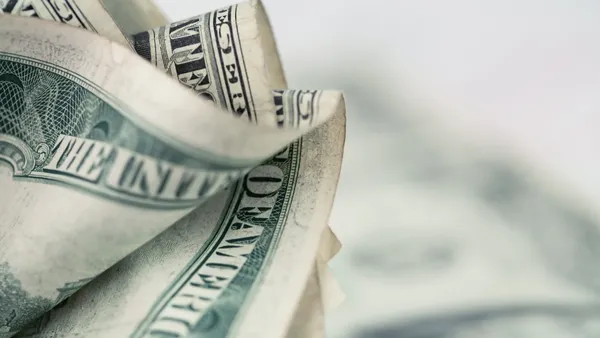Dive Brief:
- The Federal Reserve’s preferred measure of inflation, the core personal consumption expenditures price index (PCE), will range from 3% to 4% this year, spurred by above-trend demand, below-trend supply, tight labor markets and the impact from prior monetary and fiscal stimulus, according to Jason Furman, chairman of the Obama administration’s Council of Economic Advisers.
- “I expect inflation to remain very elevated in 2022,” Furman said during a webcast Friday hosted by the American Economic Association, differing with Fed forecasts that core PCE will fall to 2.7% this year from 4.7% in November.
- “The Fed has a lower real interest rate now than they did nine months ago, even though the unemployment rate is lower and inflation is higher,” Jon Steinsson, an economics professor at University of California-Berkeley, said on the webcast. “What the Fed is planning to do seems like a very mild action relative to what inflation is,” he said, referring to indications from Fed officials last month that they favor raising the benchmark interest rate three times in 2022.
Dive Insight:
CFOs setting wages and price for products and services last year would have done well to disregard Fed and Biden administration inflation forecasts that underestimated the severity and duration of inflation.
Fed officials in December 2020 said rapid price gains were transitory and predicted that core PCE would rise 1.8% during 2021. Their projection was 2.9 percentage points below the 4.7% rate during the 12 months through November, as reported by the Labor Department. The consumer price index rose 6.8% during the same period — the biggest jump in 39 years.
To be sure, most private forecasters underestimated price gains as well, said Furman, a Harvard University economist. “Everyone got that really, really badly wrong.”
Fed Chair Jerome Powell dropped the label “transitory” last month when describing inflation during testimony to the Senate Banking Committee, noting that price gains could remain high through next summer. He is scheduled to testify to the committee on Tuesday.
"We know that high inflation exacts a toll, particularly for those less able to meet the higher costs of essentials like food, housing, and transportation," Powell plans to say in remarks prepared for the committee. "We will use our tools to support the economy and a strong labor market and to prevent higher inflation from becoming entrenched."
The Fed on Dec. 15, falling in line with signaling by Powell, sped up its tapering of monthly bond purchases, putting such quantitative easing on track to end in March, or three months earlier than the Fed had planned. The end of purchases would open the way for increases in the federal funds rate.
Rather than raise the main rate just three times in 2022, the Federal Open Market Committee should push forward with 0.25 percentage point increases at each of its eight meetings this year and do more if inflation persists at a high level, Steinsson said.
“What is currently expected in terms of what the Fed is going to do in 2022 is just far too little,” he said, predicting that PCE may rise to between 5% and 7% this year. “The demand and supply imbalance is likely to continue in 2022,” and the growing demand for higher wages will likely stoke an increase in prices.
The current inclination among policymakers for three increases in the benchmark interest rate may reflect a reluctance to upset financial markets, Joseph Gagnon, a senior fellow at the Peterson Institute for International Economics and former Fed economist, said during the webcast.
“They’re worried perhaps a bit too much about financial markets,” he said, noting that “everyone castigates them if the stock market tanks.”















